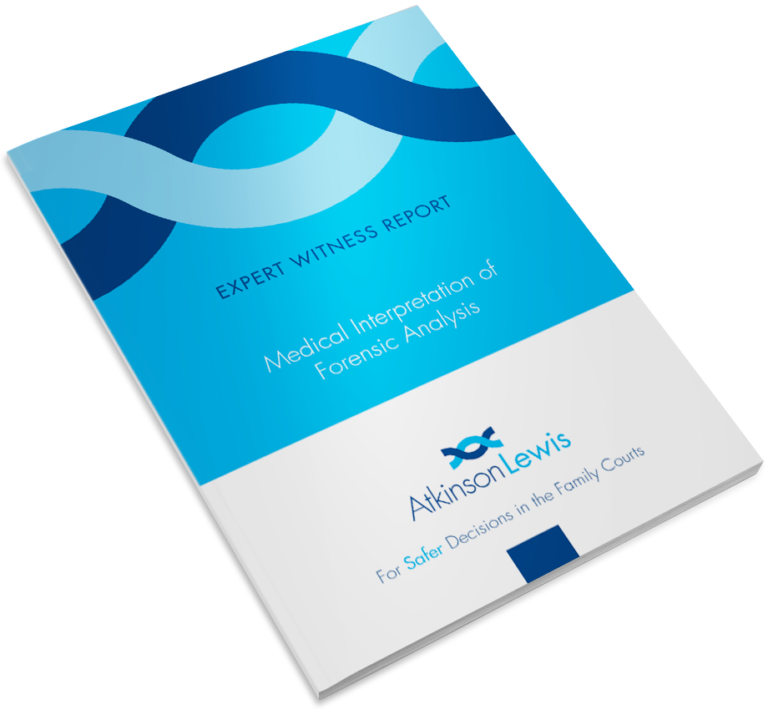Blood Alcohol Testing
- Testing Range: PEth, CDT, LFT, FBC
- Detection Window: up to 30 days
Blood Alcohol Testing: one step closer to the truth
When you’re testing parents for misuse of alcohol, there’s no “silver bullet” lab test that holds all the answers.
Evidence comes from many sources, and some forensic tests may contradict others. So it’s our job to explore different avenues without downplaying anomalies – then report back with an informed opinion, balancing the biochemical and psychiatric evidence.
Blood Alcohol tests are a significant piece of the puzzle.
They’re essential because hair alcohol tests can only tell you so much. Hair will show average levels of alcohol for up to 6 months, but won’t offer a snapshot of a single moment in time. The problem being, binge drinkers and social drinkers can return the same results – so it’s not always easy for courts to interpret the risk to the child.
Blood analysis is more time-specific, giving a more accurate insight into drinking patterns. It can identify binge episodes and examine claims of abstinence…all of which combines to build a clearer, more reliable picture.
Even then, questions will linger – especially over abstinence claims, which can never be proven beyond all doubt. But when multiple tests are combined with expert medical review, we can move ever closer to a safe conclusion.
What are we testing for?
It all depends on the allegation made against the parent, and which claims they’re disputing. But a typical custody case will use some or all of these standard alcohol tests…
SHORT-TERM INDICATORS
If you’re testing for recent consumption, there are two standard tests with a detection window of up to 30 days:
CDT (Carbohydrate Deficient Transferrin) is a widely-accepted measure. Transferrin is a protein produced by the liver that regulates the absorption of iron into the blood. As alcohol levels increase, the body produces more CDT – a carbohydrate-deficient type of transferrin that’s taken as a marker.
PEth (Phosphatidylethanol) is a more recent test, growing in popularity. PEth is a type of phospholipid formed by the presence of ethanol whenever the Blood Alcohol Concentration (BAC) level is raised. It acts as a highly specific marker with a range of uses, like revealing relapses and chronic episodes.
LONG-TERM INDICATORS
If you’re looking past 30 days, there are extra tests that can trace alcohol for up to 6 months:
LFT (Liver Function Testing) looks at the levels of three different enzymes that can signal liver damage: ALT (Alanine Transaminase), AST (Aspartate Transaminase) and GGT (Gamma-Glutamyl transferase).
FBC (Full Blood Count) measures the size of blood cells, which increase with heavy consumption. A standard test includes seven separate measures, to avoid over-reliance on a single result.
These tests are not as time-specific as the short-term indicators, but they will add to the general picture that’s emerging.
Where does Medical Interpretation fit in…and why?
We use and value all these tests, but also recognise their built-in risks and limitations.
For example:
- A raised CDT level could stem from a non-alcoholic source, like cholestatic liver disease, pregnancy or a high BMI.
- PEth levels can rise through contact with alcohol-based gels, which are widely used in the wake of COVID-19.
- LFT and FBC can produce false positives due to thyroid disorders, viral hepatitis or side effects from medication.
Of course, labs can mitigate certain risks with the latest testing methods and equipment. And when all results are congruent, the combination of tests will act as assurance.
However, no test is fool proof. And often as not, rival tests will bring conflicting evidence. All of which brings doubt and offers ample scope for appeal.
So there comes a point where quantitative measures should give way to a qualitative assessment – a medical review by a drug and alcohol specialist.
With medical interpretation, the final pieces of the puzzle fit together. It’s a chance to rationalise the anomalies and outliers, by weighing up the full range of medical, behavioural and environmental factors in play.
We’ll be asking:
- What are the alternative explanations for the data, based on the client’s declaration, medical history and routine?
- What’s their history with alcohol intake, and what does that tell us about the risk to the child?
- How does alcohol affect their behaviour, at different levels of excess?
- What’s the long-term scenario, to affect judicial review and visitation rights?
These and other questions will be asked by our medical team, overseen by Dr Catherine Pyves – an experienced psychiatrist who’s spent years working closely with individuals dealing with drug and alcohol problems.
Dr Pyves’ team will work with our trusted lab partners, and with their continued input, offer a balanced opinion:
Is it safe to determine alcohol abuse, and what are its probable and possible effects?
Why work with Atkinson Lewis?
- A “Data Plus” approach, putting lab results in context
- Medical interpretation by a drug and alcohol specialist
- End to end support for public and private law cases: from sample collection to lab analysis and medical review
- MIFA Report: an expert witness statement accepted by UK Family Courts
- All testing conducted by trusted partners in ISO 17025 Accredited Testing Laboratory – certified for multiple tests inc. hair drug testing and hair/blood alcohol testing
- Friendly, non-judgemental sample collectors working in most UK regions – highly trained to follow strict chain of custody protocols
- Transparent pricing for LAA approval
- Split-billing between all parties involved
- Hands-on customer service team, working all hours to take on new instructions
- Paperless system – from Digital Court Bundle to secure document storage


Blood Alcohol Testing is part of our MIFA report:
Medical Interpretation of Forensic Analysis
Or click below for other ways we can support your case:
In Private & Public Law Cases
You Can Rely on Atkinson Lewis
Local AuthorityAn incredible job!
Really helpful staff and second-to-none customer service. They are all really approachable and friendly. The collections are always on time and professional. In fact we have never had to deal with a situation in which they have ever let us down. As a result I think we take their brilliant service a little for granted! Thanks Atkinson Lewis for an incredible job!
ParalegalAlways my first point of call
Very helpful and approachable and always on hand to answer any queries. They are very accommodating in terms of setting up appointments and make the process very easy for legal services. Excellent service provided and always my first point of call for any alcohol/ drug or DNA testing.
How Can We Help You Today?
We’re here to assist with private and public cases in the Family Courts. If you’ve got a question, need a cost or you’re ready with an instruction, give us some details and we’ll get back to you quickly.